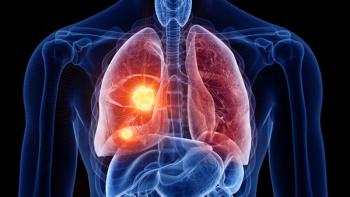
Recognizing and Responding to Food Insecurity in Individuals with Cancer

In 2020, 13.8 million (10.5%) of United States (U.S.) households were food insecure.1 Black and Hispanic households, households with children, and single-parent households experience food insecurity at even higher rates.1 Food insecurity is defined by the United States Department of Agriculture (USDA) as not having enough food to meet the demands of a healthy, active lifestyle.2 People with low food security worry that their food will run out, have reduced quality or variety of food, and may have disordered eating patterns, such as going an entire day without eating due to lack of money.2 Food insecurity is experienced by millions of Americans, some of whom have cancer.
Food Insecurity in Cancer Survivors
The American Cancer Society (ACS) defines a cancer survivor as “any person with a history of cancer, from the time of diagnosis through the remainder of their life.”3 There are approximately 1.9 million new cases of cancer survival in the U.S. in 2022, or about 5,250 new cases each day, with an increasing 5-year relative survival rate that has increased to 68% in 2017 from about 49% in the mid-1970s.4 There were approximately 16.9 million cancer survivors in the U.S. as of January 2019, with a projected 22.1 million cases in 2030.4 The increased survival rate is due to many factors, including early detection practices, age and stage at diagnosis, and advances in cancer treatments.4 Physician and patient attitudes, financial resources, treatment plan, and insurance status also affect survival,3 as does food insecurity.
In a recent nationwide survey of over 10,000 cancer survivors, 28% experienced food insecurity,5 but this prevalence was shown to be much higher (55%) in patients receiving care in a predominantly low-income, ethnically diverse oncology clinics in New York City.6 Food insecurity is significantly associated with certain types of cancer, including reproductive cancers of the cervix, ovary, and uterus,7 as well as head and neck cancer.8 Various factors are related to food insecurity among cancer survivors. The findings from a recent systematic review of 11 studies showed a higher prevalence of food insecurity among cancer survivors who had children, were young, non-Hispanic Black, had lower income, lower education, no health insurance coverage, and no partner.9 Researchers found that females were more likely to experience food insecurity than males at 10.7% and 5.3%, respectively, and that survivors under the age of 40 experience food insecurity at higher rates than survivors over 60 (20.7% versus 4.27%).7 In addition, income, health insurance, and partners status were related to food insecurity in cancer survivors.7 Importantly, uninsured cancer survivors reported food insecurity at approximately 26.53%, compared with those who had health insurance at 7.08%.7 Food insecurity is multifaceted and has significant effects in people with cancer.
Effects of Food Insecurity in Cancer Survivors
Food insecurity is associated with adverse mental and physical outcomes, including worse overall health, diabetes, hypertension, depression, and anxiety.10 Cancer survivors without adequate food have worse quality of life and worse health outcomes than cancer survivors that have enough food to eat.11 Indeed, some adverse effects of cancer and cancer treatment are also experienced by those with food insecurity, including fatigue, malnutrition, and a weakened resistance to infection.9 Demands placed upon people with cancer include prescription costs, treatments, time spent away from work, travel, and potentially more expensive dietary requirements,12 all of which can decrease the amount of money that a person has for food. In addition, a person experiencing food insecurity may not be able to adhere to their medication regimen, increasing risk for disease complications.12 In one study, 55% of patients with food insecurity did not take their medications because they were unable to afford them, compared to 12% of their peers that were food-secure.13
Current Interventions and Recommendations
Memorial Sloan Kettering Cancer Center serves as a model for addressing food insecurity during cancer treatment. The Food to Overcome Outcome Disparities (FOOD) project combines food pantries at the cancer treatment centers to provide food items tailored to patients with cancer and food insecurity, especially immigrants and other medically underserved populations.14 Enrollment in public health insurance plans may also help to curb out-of-pocket expenses15 that can be utilized for food. Some practices have emergency relief bags of non-perishable food for patients in need or a “give and take table” with items that people can take without judgment or proof of need, as well as healthy snacks in the waiting area.13
Food insecurity affects cancer outcomes, and screening has been described as a “missing piece” in managing cancer.12 Recommendations include:
- Universal screening for food insecurity in cancer survivors (such as the validated two-item Hunger SignTM16
- Education about nutritious, cost-effective food options
- Discussion of ability to purchase food, especially with sudden increases in treatment costs
- Subsequent referral to food resources as necessary
- Referral for assistance with applying for supplemental nutrition programs
- Placement of healthy snacks in a waiting area, such as yogurt or cheese sticks
Food insecurity negatively affects cancer outcomes; therefore, it is imperative that healthcare providers recognize and respond to food insecurity in people with cancer.
References
- Coleman-Jensen A, Rabbitt M, Gregory C,Singh A. Household food security in the United States in 2020. 2021. Accessed July 21, 2022.
https://bit.ly/3aXtQUg - Definitions of food security. United States Department of Agriculture Economic Research Service (USDA ERS). April 22, 2022. Accessed July 21, 2022.
https://bit.ly/3OqlouB - Cancer treatment & survivorship facts & figures 2019-2021. American Cancer Society (ACS). (2019). Accessed July 21, 2022.
https://bit.ly/3B8atm8 - Siegel RL, Miller KD, Fuchs HE, Jemal A. Cancer statistics, 2022. CA: (Journal). 2022;72(1):7-33.
https://doi.org/10.3322/caac.21708 - Charkhchi P, Fazeli Dehkordy S, Carlos RC. Housing and food insecurity, care access, and health status among the chronically ill: an analysis of the behavioral risk factor surveillance system. J. Intern. Medicine. 2018;33:644–650.
https://doi.org/10.1007/s11606-017-4255-z - Gany F, Lee T, Ramirez J, Massie D, Moran A, Crist M, et al. Do our patients have enough to eat?: Food insecurity among urban low-income cancer patients. JHCPU. 2014;25(3):1153-1168.
https://doi.org/10.1353/hpu.2014.0145 - Trego, M. L., Baba, Z. M., DiSantis, K. I., & Longacre, M. L. Food insecurity among adult cancer survivors in the United States. J. Cancer Survivor. 2019;13(4):641-652.
https://doi.org/10.1007/s11764-019-00783-9 - Berger MH, Lin HW,Bhattacharyya N. A national evaluation of food insecurity in a head and neck cancer population. Laryngoscope. 2021;131(5):E1539-e1542.
https://doi.org/10.1002/lary.29188 - Coughlin, SC. Food insecurity among cancer patients: A systematic review. J. Food Nutrit. Sciences. 2021;8(1): 41-45. doi:10.15436/2377-0619.21.3821
- Gundersen C,Ziliak JP. Food insecurity and health outcomes. Health Aff (Millwood). 2015;34(11):1830-1839.
https://doi.org/10.1377/hlthaff.2015.0645 - Paolantonio L, Kim SY, Ramirez J, et al. Food purchasing behavior of food insecure cancer patients receiving supplemental food vouchers. Support. Care in Cancer. 2020;28(8):3739-3746.
https://doi.org/10.1007/s00520-019-05183-4 - Patel KG, Borno HT,Seligman HK. Food insecurity screening: A missing piece in cancer management. Cancer. 2019;125(20):3494-3501.
https://doi.org/https://doi.org/10.1002/cncr.32291 - Weisberg, TF. Improving cancer care by addressing food insecurity. Oncology Issues. 2020;35(4):36-45.
https://doi.org/10.1080/10463356.2020.1771130 - Food to Overcome Outcome Disparities (FOOD). Memorial Sloan Kettering Cancer Center. 2022. Accessed July 21, 2022.
https://bit.ly/3B8atm8 - Berkowitz SA, Terranova J, Randall L, Cranston K, Waters DB, Hsu J. Association Between Receipt of a Medically Tailored Meal Program and Health Care Use. JAMA Intern. Medicine, 2019;179(6):786-793.
https://doi.org/10.1001/jamainternmed.2019.0198 - Hager ER, Quigg AM, Black MM, et al. Development and validity of a 2-item screen to identify families at risk for food insecurity. Pediatrics. 2010;126(1): e26-32.
https://doi.org/10.1542/peds.2009-3146
Newsletter
Knowledge is power. Don’t miss the most recent breakthroughs in cancer care.




